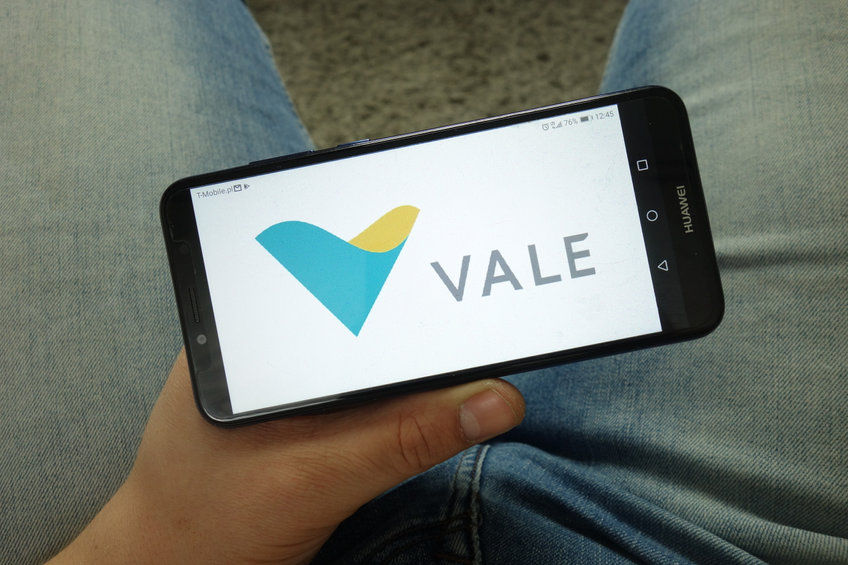Vale S.A. (NYSE: VALE) made headlines today by raising its full-year 2024 iron ore production forecast, reflecting its strategic efforts to navigate challenging market conditions.
The Brazilian mining giant expects to produce between 323 million to 330 million metric tons of iron ore this year, up from its previous estimate of 310 million to 320 million tons.
This increase comes despite iron ore prices trading near two-year lows, with iron ore futures in Singapore briefly dipping below $90 per ton earlier this week.
Vale’s production upgrade suggests confidence in its ability to manage costs effectively, with all-in costs projected between $3,300 and $3,800 per ton.
This forecast adjustment is particularly significant in the context of Vale’s recent operational challenges and broader market dynamics.
Just days before, reports suggested Vale and BHP (NYSE: BHP) were nearing a massive $18 billion settlement with Brazilian authorities over the 2015 Mariana dam collapse, a disaster that continues to cast a shadow over both companies.
The settlement, which far exceeds previous offers, underscores the lingering financial and reputational risks Vale faces, even as it strives to boost production and maintain profitability.
Vale’s Q2 performance
In terms of financial performance, Vale’s Q2 2024 results were mixed. The company reported a GAAP EPS of $0.65, beating analysts’ expectations by $0.08, but revenue fell short, coming in at $9.92 billion—$560 million below estimates.
Despite the revenue miss, Vale managed to increase its iron ore shipments by 7% year-over-year and 25% quarter-over-quarter, driven by record production levels not seen since 2018.
The company’s EBITDA for the quarter stood at $4.0 billion, and capital expenditures were slightly higher year-over-year at $1.3 billion, aligning with the year’s guidance.
Vale’s gross debt and leases rose slightly to $15.1 billion in Q2, reflecting the capital-intensive nature of its operations.
However, Vale has maintained its copper production guidance for 2024 at 320,000 to 355,000 metric tons, signaling stability in its diversification efforts.
The company’s cost control measures, particularly in iron ore production, are expected to yield stronger performance in the second half of the year as lower-cost volumes from its Northern System ramp up.
Challenges for Vale stock
However, Vale faces significant challenges from the broader economic environment. The iron ore market has been under pressure due to weakening demand from China, the world’s largest consumer of the commodity.
Analysts have noted that China’s steel industry, which accounts for a significant portion of iron ore demand, is in decline, with consumption expected to fall to 70%-80% of its peak levels.
This downturn in Chinese demand is a critical challenge for Vale, given that approximately 65% of its revenue is derived from iron ore sales.
Shift to higher grade ore
On the positive side, Vale could benefit from its strategic focus on higher-grade iron ore production.
As the global market shifts towards higher-quality ores, driven by environmental regulations and the need for more efficient steelmaking processes, Vale’s investments in its high-grade S11D mine and other projects position it well to capture premium pricing.
Additionally, Vale’s exposure to nickel and copper, both of which are expected to see strong demand growth in the coming years due to the energy transition, provides some diversification and potential for revenue stability.
Vale’s valuation
From a valuation perspective, Vale appears to be trading at a discount relative to its peers, with a price-to-earnings ratio of 4.88 well below the sector median of 21.40.
Despite this, the company’s share price has been under pressure, down approximately 30% year-to-date, reflecting investor concerns over its heavy reliance on iron ore and the uncertainties surrounding Chinese demand.
However, most analysts argue that the stock is undervalued, particularly given Vale’s strong operational performance and its potential to capitalize on the growing demand for high-grade iron ore.
Now, let’s see what the charts have to say about the stock’s price trajectory. This technical analysis will explore whether Vale’s recent production upgrades and strategic initiatives can translate into a bullish reversal or if the stock will continue to face downward pressure in the near term.
Vale stock technical analysis
Vale’s stock has been in an extended downtrend since July 2021 as can be seen on the charts. However, throughout this downtrend, the stock took support multiple times near $11.6, which can also be seen in the charts.
Source: TradingView
In June this year, the stock broke below this long-term support and is currently trading below it. As long as it trades below this level it will remain weak. Hence, investors should ideally wait for the stock to give a daily closing above this earlier support turned now resistance.
Traders with a bearish outlook can initiate short positions, but once the stock bounces back to $10.5 or higher. If it does, they can short with a stop loss at $11.7 and a profit target near $8.2.
The post Can Vale’s upgraded iron ore forecast revive its stock price? appeared first on Invezz

